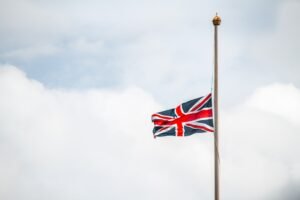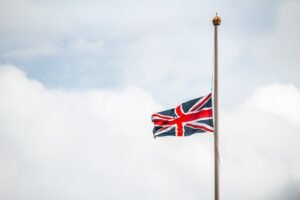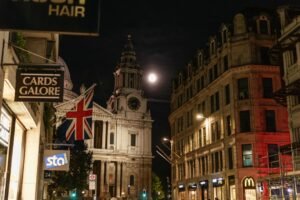

The Natural Wonders of Norway: 25 Key Terms
Norway is a country known for its breathtaking natural beauty. From the majestic fjords to the dancing Northern Lights, Norway offers a plethora of natural wonders that attract visitors from all over the world. Preserving these natural wonders is of utmost importance, as they not only provide a source of awe and inspiration, but also play a crucial role in maintaining the delicate balance of our planet’s ecosystems.
Table of Contents
ToggleKey Takeaways
- Norway is home to a variety of natural wonders, including fjords, glaciers, waterfalls, mountains, national parks, coastal regions, lakes, and caves.
- The fjords of Norway are a breathtaking sight, with their steep cliffs and crystal-clear waters.
- The Northern Lights, a natural phenomenon, can be seen in Norway’s northern regions and are a must-see for any traveler.
- The glaciers of Norway offer a majestic landscape, with their icy blue hues and rugged terrain.
- The waterfalls of Norway provide a refreshing experience, with their misty spray and thundering sound.
The Fjords of Norway: A Spectacular Sight
Fjords are narrow, deep inlets of water that are surrounded by steep cliffs or mountains. They are formed through a combination of glacial erosion and rising sea levels. Norway is home to some of the most stunning fjords in the world, including the Geirangerfjord, the Nærøyfjord, and the Sognefjord.
The fjords of Norway offer a wide range of activities for visitors to enjoy. From cruising along the calm waters and taking in the breathtaking scenery to kayaking or hiking along the fjord’s edges, there is something for everyone. The fjords also provide a habitat for a variety of wildlife, including seals, porpoises, and seabirds, making them a haven for nature lovers.
The Northern Lights: A Natural Phenomenon
The Northern Lights, also known as the Aurora Borealis, are a natural light display that occurs in the polar regions. They are caused by charged particles from the sun colliding with atoms in Earth’s atmosphere. Norway is one of the best places in the world to witness this mesmerizing phenomenon.
The best time to see the Northern Lights in Norway is during the winter months, from September to March. The northern regions of Tromsø and Svalbard offer some of the best viewing opportunities due to their proximity to the Arctic Circle. It is important to choose a clear night with minimal light pollution for optimal viewing. Patience is key, as the Northern Lights can be unpredictable and may require waiting for several hours.
The Glaciers of Norway: A Majestic Landscape
Norway is home to numerous glaciers, which are large bodies of ice that move slowly over time. These glaciers have shaped the landscape of the country, carving out deep valleys and leaving behind stunning fjords. Some of the most famous glaciers in Norway include the Jostedalsbreen Glacier, the Briksdalsbreen Glacier, and the Nigardsbreen Glacier.
Visiting these glaciers offers a unique opportunity to witness the power and beauty of nature up close. Activities such as glacier hiking, ice climbing, and glacier walks are popular among visitors. It is important to remember that glaciers are constantly changing and can be dangerous, so it is essential to go with a knowledgeable guide and follow safety precautions.
The Waterfalls of Norway: A Refreshing Experience
Norway is known for its numerous waterfalls, which are a result of the country’s rugged terrain and abundant rainfall. Some of the most famous waterfalls in Norway include the Vøringsfossen, the Seven Sisters, and the Kjosfossen.
Visiting these waterfalls provides a refreshing and awe-inspiring experience. Activities such as hiking, photography, and even boat tours are popular among visitors. Waterfalls also hold cultural significance in Norwegian folklore and are often associated with mythical creatures and legends.
The Mountains of Norway: A Hiker’s Paradise

Norway is a hiker’s paradise, with its vast mountain ranges offering a wide range of trails for all levels of hikers. Some of the most famous mountains to hike in Norway include Trolltunga, Preikestolen (Pulpit Rock), and Besseggen.
Hiking in Norwegian mountains can be challenging, as the terrain can be steep and rugged. It is important to be well-prepared, with proper hiking gear and knowledge of the trail. Safety precautions such as checking the weather forecast, informing someone of your plans, and carrying a map and compass are essential.
The National Parks of Norway: A Haven for Wildlife
Norway is home to numerous national parks that protect its diverse ecosystems and wildlife. Some of the most notable national parks in Norway include Jotunheimen National Park, Rondane National Park, and Hardangervidda National Park.
These national parks offer a wide range of activities for visitors, including hiking, camping, fishing, and wildlife spotting. Visitors may have the chance to see animals such as reindeer, moose, lynx, and even the elusive Arctic fox. It is important to respect the rules and regulations of the national parks to ensure the preservation of these natural habitats.
The Coastal Regions of Norway: A Seaside Escape
Norway’s coastal regions offer a unique blend of stunning landscapes and charming seaside towns. Some of the most popular coastal towns to visit in Norway include Bergen, Ålesund, and Stavanger.
Activities such as boat tours, fishing trips, and exploring the picturesque towns are popular among visitors. The coastal regions also offer opportunities for wildlife spotting, with the chance to see seals, whales, and seabirds. It is important to be mindful of the fragile coastal ecosystems and practice responsible tourism.
The Lakes of Norway: A Serene Setting
Norway is home to numerous lakes that offer a serene setting for relaxation and outdoor activities. Some of the most famous lakes in Norway include Lake Mjøsa, Lake Femunden, and Lake Gjende.
Visiting these lakes provides opportunities for swimming, fishing, kayaking, and hiking along their shores. Lakes also hold cultural significance in Norwegian traditions and are often associated with folklore and legends.
The Caves of Norway: A Hidden Gem
Norway is home to several caves that offer a unique underground adventure. Some of the most famous caves to visit in Norway include the Grønligrotta Cave, the Lofthus Cave, and the Trollkirka Cave.
Exploring these caves provides a chance to witness stunning rock formations, underground rivers, and unique ecosystems. Activities such as cave tours, spelunking, and photography are popular among visitors. Caves also hold historical significance in Norwegian culture, with some caves containing ancient rock art and artifacts.
Norway’s natural wonders are a testament to the beauty and power of nature. From the majestic fjords to the dancing Northern Lights, each natural wonder offers a unique experience for visitors. It is important to practice responsible tourism and preserve these natural wonders for future generations to enjoy. By respecting the environment, following safety guidelines, and supporting sustainable practices, we can ensure that Norway’s natural beauty remains intact for years to come.
If you want to learn Norwegian, you can register for classes here. We look forward to hearing from you and helping you become fluent in Norwegian.





